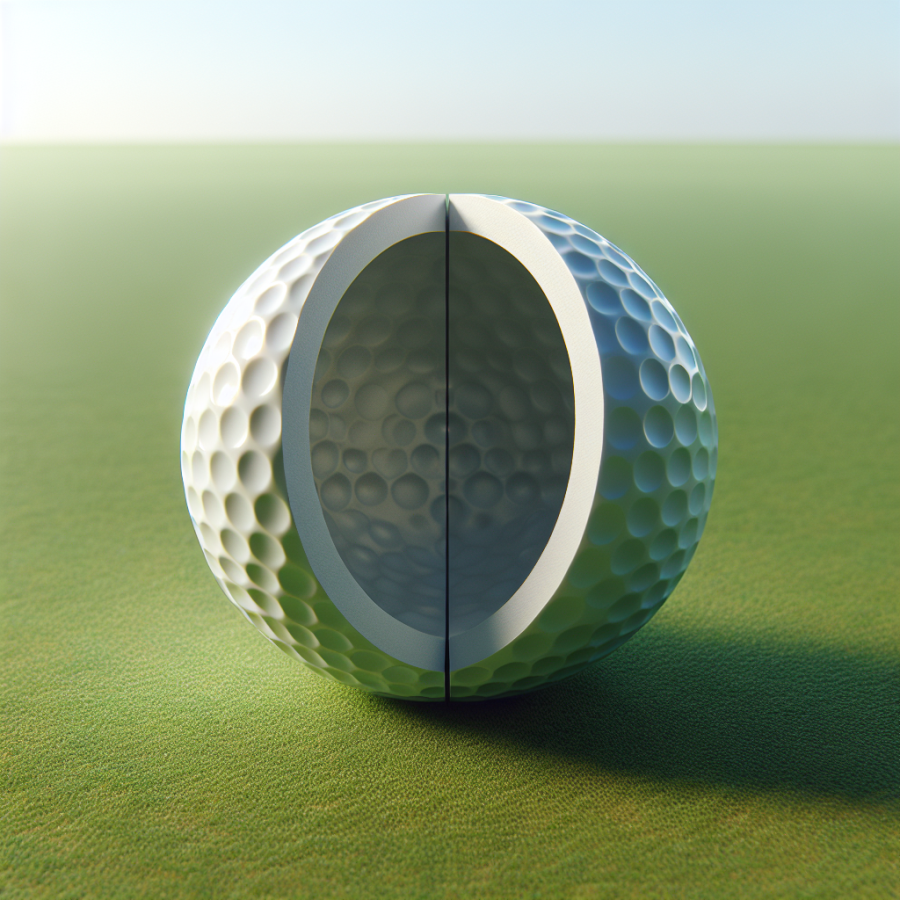Understanding the Construction of a Golf Ball
There are many misconceptions around the construction of a golf ball, with one popular myth being that golf balls are hollow. This myth, circulated by many, is nothing more than a misunderstanding of the golf ball's construct—a topic that we are going to shed light on in this blog.
Let's start with the basics. A golf ball is not hollow. In fact, the construction of a golf ball is much more complicated and involves multiple layers. There are primarily three types of constructions: one-piece, two-piece, and multi-layered balls.
One-piece golf balls are the simplest in terms of manufacturing. Made from a solid piece of synthetic material (typically Surlyn), they are highly durable but offer limited performance characteristics and are usually found on driving ranges.
The most common type of golf ball used by recreational golfers is the two-piece ball. It comprises a solid core usually made of rubber or a resin compound, encased by a durable outer cover made from a material known as Surlyn. This type of ball combines both durability and distance, making it a favorite amongst casual golfers.
Multi-layered balls are more complex and are designed to cater to the performance needs of professionals and low-handicap golfers. The layers in these balls can vary from three to five, and each layer serves a specific purpose. The inner core is typically made of rubber, providing the kinetic energy needed for distance. The outer layers are designed for spin control, feel, and overall performance. These balls are usually covered with a urethane cover for a soft feel and excellent spin control.
The idea that golf balls are hollow likely originates from the presence of dimples. Contrary to common belief, dimples don't imply hollowness but rather are an essential feature of the golf ball design. Dimples are designed to decrease drag and increase lift. The turbulence induced in the boundary layer by the dimples reduces the air resistance, which results in longer and more accurate shots.
In truth, the construction of a golf ball involves a blend of scientific precision and meticulous design. Each layer is designed to deliver optimal performance, whilst the outer shell and dimples contribute to distance and flight stability. Therefore, to consider the golf ball as hollow is to oversimplify the elaborate process and science that goes into creating this essential piece of golfing equipment.
In conclusion, debunking the hollow golf ball myth is essential to understanding the intricacies of the game.
Read also:
Exploring the Excitement and Controversy Surrounding Hunting
Debunking the 'Hollow Golf Ball' Myth
While golf is steeped in tradition, it's also littered with many myths that can stir confusion in the minds of both pros and novices. One such age-old myth is the concept of the 'Hollow Golf Ball.' This belief is rooted in the notion that the core of the golf ball is hollow, which is categorically a misunderstanding.
The science of golf ball manufacturing and design is much more complex and interesting. Golf balls are not as simple as they may seem. In fact, they are layered spheres typically made up of one to five different layers, each contributing to the overall performance of the ball. These layers work together to create the desired distance, spin, and control characteristics of the ball.
Let's first take the example of a two-layer golf ball, also known as a two-piece golf ball. This type of golf ball consists of a solid rubber core wrapped in a durable cover made of Surlyn or Urethane. The core is precisely the opposite of being hollow - it is a dense, rubbery substance that's responsible for the golf ball's distance. In contrast, the outer layer provides the feel and controls the short-game spin.
Three-layer, or three-piece golf balls, are typically designed for more experienced golfers. They consist of a solid rubber or liquid-filled core, an enhancement layer (which is commonly called the mantle), and a cover. The enhancement layer works to control the spin rates and offers a more responsive feel.
Four and five-layer golf balls are even more intricate. Each layer is designed to react to different clubhead speeds, providing optimal performance for a variety of shots. From the driver down to the lob wedge, these layers work in unison to deliver unmatched distance and precise control.
Furthermore, some golf balls feature a 'Dual Core.' This term describes a ball that has two cores - an inner and an outer core. This design doesn't imply that the ball is hollow; instead, the two cores are designed to react differently based on the speed of the swing. The inner core helps deliver maximum distance on long shots, while the outer core will activate on slower swings, such as approach shots, allowing for a softer feel and greater precision.
In conclusion, the notion that golf balls are hollow is a well-established myth. By exploiting the principles of physics, manufacturers' use various materials to design golf balls with precise weight distributions and multiple layers, which give golfers an array of choices depending on their game style and skill level.




